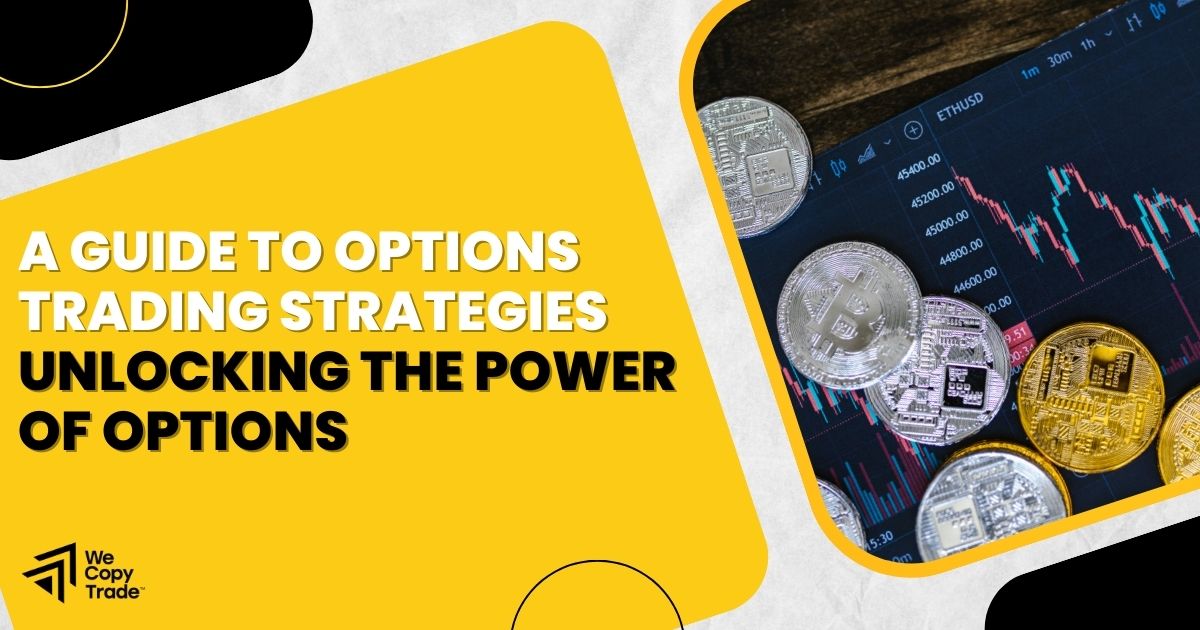
Providing flexibility and a range of risk-management and return possibilities, options trading strategies may be a great way to boost the potential of your portfolio. The principles of options trading, the many strategies accessible, their working dynamics, and how to enhance your approach will be covered in this article. Knowing alternatives will provide great opportunities in the financial markets regardless of your level of experience with investing.
Overview of Options Trading Strategies
An option is a kind of contract wherein the buyer may purchase or sell a securities at a certain price going ahead. An option holder basically pays a premium for the advantage to purchase or sell the assets within a certain period.
Should market prices become negative for option holders, they will let the option expire worthless and not exercise their right, therefore insuring that potential losses never surpass the premium. Should the market turn positively, the holder can decide to carry out the contract.
Typically, options are divided into “call” and “put” contracts. Known as the exercise price or striking price, a call option grants the contract’s buyer the right to eventually purchase the underlying asset at a defined price. A put option lets the buyer sell the underlying asset at a defined price going forward.
Options trading strategies are about leveraging contracts to control risk, create income, and make smart investments—not just about speculating. Using basic cases, let us dissect how it works.

A call option purchase example: Assume for the moment that you think a company’s stock will climb over the following several months. You pay a $5 premium per share to purchase a call option with a $50 strike price that expires in three months.
- Should the stock price climb to $60, you have an option to purchase at $50, therefore generating a $10 profit per share. Your net profit—after deducting the $5 premium—is $5 per share.
- Should the stock price fall short of $50, you will let the option expire, therefore forfeiting only the premium paid, $5 per share.
Pros and Cons of Options Trading Strategies
Along with the possibility to create revenue, options trading has special advantages like increased leverage and flexibility. But it also presents difficulties and the possibility of large losses that call for rigorous knowledge and strategic planning.
Pros of Options Trading Strategies
- Leverage: With a somewhat little investment, options let traders manage a significant portion of an asset. With this leverage, even little changes in the price of the asset may result in significant profits or losses, therefore providing a possibility for better returns with less initial investment.
- Flexibility: By use of a broad spectrum of techniques, options may be customized to fit various investment objectives and economic situation. To profit from different market conditions, traders might use simple tactics include purchasing calls and puts or more sophisticated ones including straddles and spreads.
- Risk Management: As a kind of insurance, options help to guard against losses in a larger portfolio. Purchasing put options, for instance, offers side protection by helping to balance the risk of a drop in the value of previously owned equities.
- Income Generation: Writing choices including covered calls let traders earn premiums even in sluggish or flat markets. When one expects little to no volatility in the price of the underlying asset, this approach may be a good means of income generation.
Cons of Options Trading Strategies

- Complexity: Options may be challenging to comprehend for beginner and need for a strong awareness of the fundamental assets, market dynamics, and pricing policies. Learning how to trade options properly requires a lot of time and work on many traders’ part.
- Time Sensitivity: Unlike stocks, options have expiry dates, which creates some time pressure. Long-term plans become more difficult this way as traders have to consider not just price swings but also the timing of such moves to prevent contract expiry.
- Potential for Losses: Though options provide the possibility for large profits, they may also cause major losses, especially should the market turn against the transaction. Traders risk losing their whole investment in the options contract should the price of the underlying asset fall short of expected level.
Types of Options Trading Strategies
Highly complex, options trading techniques are always evolving on the market. Although traders do not always follow any technique, understanding the principles will provide you a whole picture of options trading.
- Covering Call: A covered call is a sale of a call option on an asset while keeping long on that asset. This strategy limits potential upside while nevertheless making money from premiums.
- Married Put: This is the method wherein an investor buys a put option for a stock they already own. It acts as defense against a likely price decline in the stock.
- The Bull Call Spread: involves buying a call option at a lesser strike price then selling another call option at a higher strike price. It limits losses as well as potential income.

- Bear Put Spread: Under a bear put spread, an investor buys a put option at a higher strike price then sells a put at a lower strike price. Its benefit comes from the asset’s dropping price.
Protective Collar: Under protective collars, one buys a protective put, holds a long position in an asset, and sells a call option. It provides protection, therefore restricting both possible losses and benefits. - Long Straddle: Using the long straddle strategy, an investor buys both a call and a put option on the same asset with the same strike price and expiration date. It gains from notable fluctuation in both directions regarding prices.
- Long Strangle: Similar to the straddle, but with varying strike values, is the long strangle. This approach gains from a notable price change but needs a more extensive movement depending on the various strikes.
- Iron Condor: Combining a bear call spread with a bull put spread is Iron Condor. It benefits from moderate volatility and range-bound pricing.
- Iron Butterfly: Like the iron condor, but with the call and put options having the identical intermediate strike price, is the iron butterfly. Low volatility and a limited price range help this approach be beneficial.
It is important to remember that just three to five kinds of options, such as covered call, bull call spread or married but, are often employed. To establish a strong approach, carefully choose and deep research a couple of trading strategies. Try all trading strategies with no risks by copy trading on WeCopyTrade.
Tips to Optimize Options Trading
Though it may be very profitable, options trading calls for a careful strategy. These pointers help you maximize your Options Trading Strategies:

- Understand the Greeks: Several elements often referred to as “the Greeks” affect options price. These include Delta (the change in the price of the option based on the value of the underlying asset), Gamma (the amount of change in Delta), Theta (time decay). Knowing this will enable you to make better judgments.
- Clearly State Objectives: Clearly state your goal before starting any option trading. Do you want to create income, hedge against risk, or gamble on price change? Every approach has advantages; thus, understanding your objective will enable you to choose the appropriate one.
- Prioritize risk management: Never run more danger than you are ready to pay for. Use diversified positions, stop-loss orders, and stay away from funding one transaction entirely. Maintaining presence in the options market depends on risk management.
- Employ a paper trading account: Practice with a paper trading account to learn how various techniques perform before you handle real money. This will help you to develop your abilities free from financial danger.
- Remain Updated: The market is always changing, hence choices pricing could vary rapidly. Keep informed about financial news, income statements, and other pertinent data that can influence the underlying asset’s price.
- Watch Expiration Dates Closely: Options are time-sensitive tools whose value decreases with approaching expiry. Make sure your trade and account times suit you, then consider time decay (theta) when choosing expiry dates.
- Start small and expandable: Start with simpler techniques and smaller holdings if you are fresh to options trading. Experience will help you grow and diversify your transactions.
- Keep learning: In a dynamic field, options trading strategies require constant study if one wants to succeed. Maintaining current with market trends, changing tactics, and new technologies can help you better grasp how changes in the market could affect your trading. Review and change your plans often depending on fresh data and market circumstances to stay competitive and successful in your trading technique.
Conclusion
In the financial market, options trading strategies are a sophisticated tactic that calls for significant expertise and research—especially for beginners. Traders who want to really prosper have to commit time to pick the subtleties of this market. For individuals wishing to learn more trading techniques, think about enrolling and attempting copytrading using many tactics to get real-world knowledge at https://wemastertrade-mena.com/. This practical method helps you to improve your trading strategies and better grasp market dynamics, therefore guiding your decisions.











